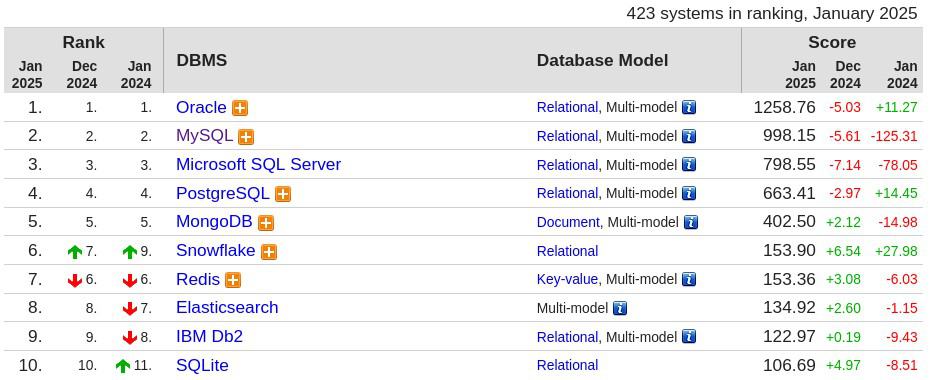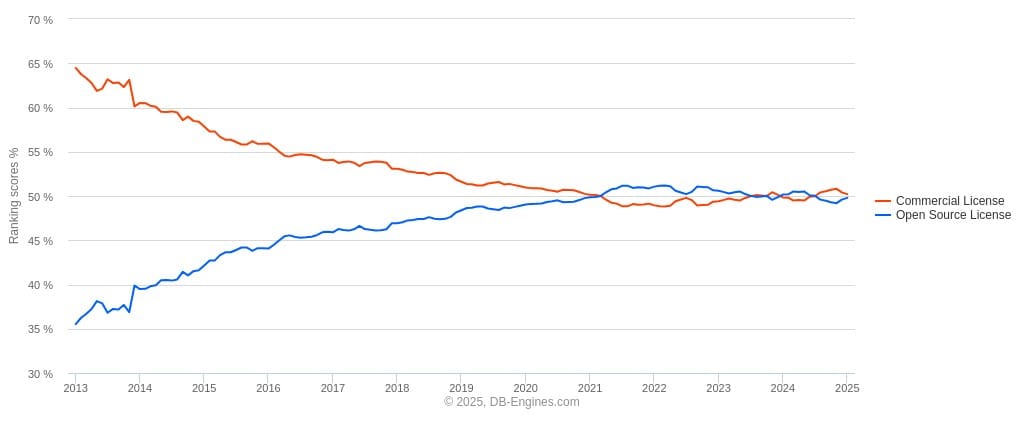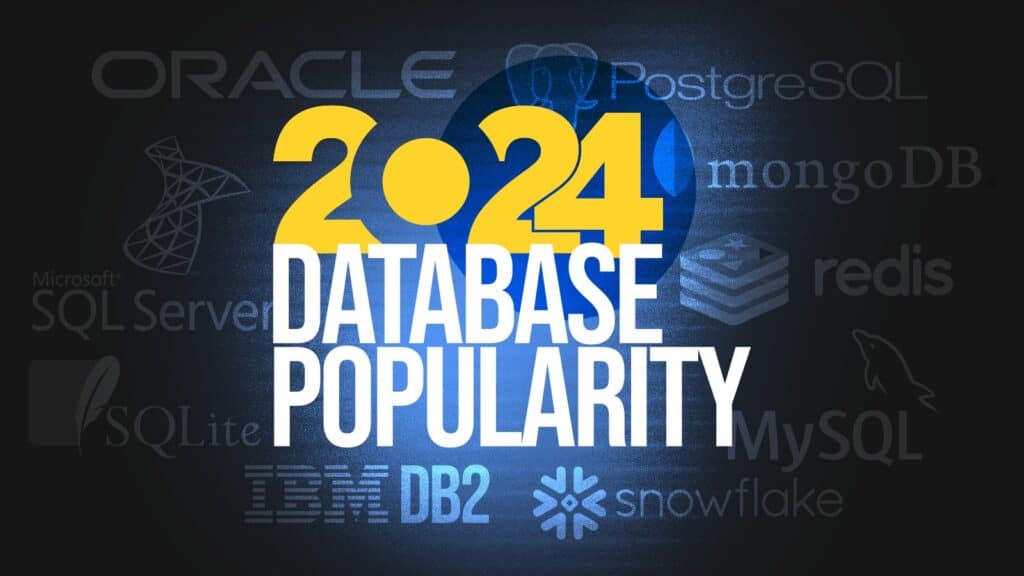The DB-Engines ranking of the most popular database management systems for January 2025 is now available. It features data from the past 12 months’ popularity trends for 423 databases, thus highlighting the platforms that dominated the data management scene over the past 2024.
From traditional relational databases to modern NoSQL solutions, the list provides clear insights into trends in the tech sector, particularly in data storage and processing. Here’s a quick look at who came out on top and who fell short.
Unsurprisingly, Oracle holds the top spot as the leading database, dominating the enterprise sector for many years. MySQL, Microsoft SQL Server, PostgreSQL, and MongoDB complete the top five. Among them, MongoDB stands out as the sole NoSQL database in the group, while the other four represent the leading stars of the RDBMS segment.

The big winner for 2024 is Snowflake, a cloud-based data platform that provides data storage, processing, and analytic solutions, making an impressive leap from ninth place to seventh, with popularity surging by nearly 28 points.
For the unfamiliar, it’s known for its unique architecture, which separates computing and storage, making it scalable, flexible, and efficient for modern data warehousing and analytics needs. Oracle and PostgreSQL also gained popularity by over 11 and 14 points, respectively.
On the flip side, the three databases that saw the biggest drop in popularity in 2024 are MySQL (-125), Microsoft SQL Server (-78), and Microsoft Access (-25).
Rounding out the top ten are Redis, which, after changes to its licensing model, has slipped from 6th to 7th place; Elasticsearch, dropping from 7th to 8th; IBM Db2, now in 9th; and the welcome surprise of SQLite, breaking into the top ten and displacing Microsoft Access.
Now, let me say a few words about the criteria based on which the evaluation was formed.
First and foremost, the ranking does not measure actual installations or usage within IT systems but serves as an early indicator of potential adoption trends. Instead, it assesses the popularity of database management systems based on the following six parameters:
- Mentions on websites (via search engines like Google and Bing)
- General interest (Google Trends searches)
- Frequency of technical discussions (e.g., on Stack Overflow and DBA Stack Exchange)
- Job offers mentioning the system (from platforms like Indeed and Simply Hired), profiles on professional networks (e.g., LinkedIn)
- Mentions in social networks (e.g., Twitter/X)
These factors are standardized, averaged, and adjusted to maintain relative consistency, ensuring the scores reflect comparative popularity rather than absolute values. According to DB-Engines, this methodology ensures the ranking captures the broader visibility and engagement surrounding each system.
To wrap things up, I’d like to leave you with an interesting comparison. Out of the 423 databases being tracked, 229 are open-source, while the other 194 are proprietary. As of January 2025, their popularity is nearly neck and neck—49.8% for open-source databases and 50.2% for proprietary ones.
As you can see from the graph below, over the years, the trend has shifted noticeably. Back in 2013, closed-source databases were twice as popular as open-source ones. By 2021, however, this gap had disappeared, and today, their popularity is evenly distributed, as previously mentioned.

For more information, visit the statistics on the DB-Engines website.
